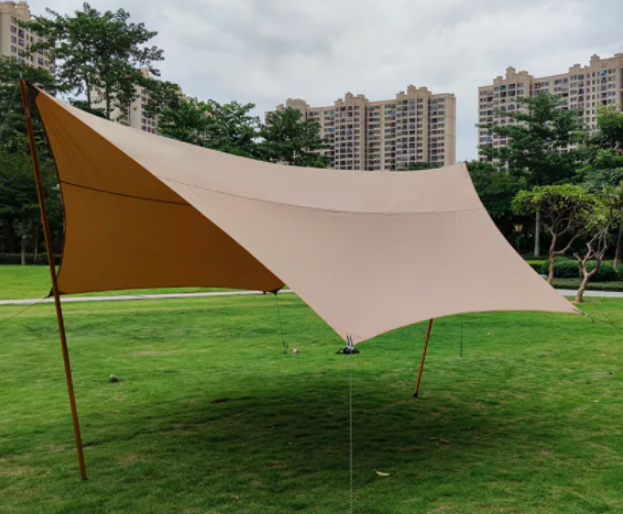Are Canvas Tarps Worth It? Pros and Cons
Canvas tarps have stood the test of time and are now favored for a multitude of uses. Crafted from cotton or polyester and coated with a wax layer for water resistance, they offer durability and versatility. However, alongside their benefits, canvas tarps also come with drawbacks. In this blog, we'll delve into the advantages and disadvantages of using canvas tarps.
Pros
Durability: While experts typically advocate for vinyl material in heavy-duty applications, certain canvas tarps can still offer strength and resilience depending on the use case. Reinforced 18oz and 21oz canvas tarps, for instance, can endure rain and snow, rendering them suitable for outdoor environments.
Breathability: Unlike other types of tarps, canvas tarps are breathable. This feature allows for air circulation, preventing moisture buildup and reducing the risk of mold and mildew. They are ideal for covering items that need to be stored for extended periods.
Versatility: Canvas tarps come in a variety of sizes and colors, making them suitable for various purposes. Whether used as covers for boats, cars, or machinery, or as ground sheets for camping and outdoor activities, their versatility is unmatched.
Environmentally friendly: Made from 100% Duck Cotton, canvas tarps are composed of natural materials that are biodegradable, offering a more eco-friendly option compared to synthetic tarps.
Cost-effective: In many cases, canvas tarps present an affordable solution for those seeking durable and long-lasting covers. Certain sizes often come at lower prices than alternative tarp options, making them budget-friendly.
Cons
Weight: Compared to other types of tarps, some canvas variants tend to be heavier, which can pose challenges in handling and transportation. Their weight becomes especially noticeable when wet, making them more difficult to manage.
Waterproofing: While canvas tarps typically exhibit water resistance, they may not offer complete waterproofing. This limitation makes them unsuitable for covering items that require absolute dryness, such as electronics or delicate equipment.
Limited lifespan: Despite their overall durability, canvas tarps and shelter, like most other tarps, have a finite lifespan. Over time, they can become brittle and deteriorate, especially when exposed to sunlight or harsh weather conditions like extreme cold.
Tarpaulin vs. Canvas: Their Differences
Material
Tarpaulin is made of synthetic materials such as polyester, nylon, or polyethylene, which are laminated or coated with PVC or polyurethane. In contrast, canvas is made of natural fibers like cotton or linen, woven together to create a sturdy fabric.
Water Resistance
Tarpaulin provides complete waterproofing, effectively repelling water and protecting items even in wet conditions. Similarly, canvas is water-resistant, but it may develop mildew in humid environments due to moisture accumulation on its surface.
Sustainability
Canvas is typically crafted from natural materials like cotton, linen, or hemp, making it biodegradable and recyclable. On the other hand, tarpaulin is made from synthetic materials that are non-biodegradable and can take many years to decompose, contributing to environmental pollution.
Conclusion
In summary, canvas tarps offer numerous benefits, including durability, breathability, versatility, sustainability, and affordability. However, they also come with drawbacks such as weight, limited waterproofing, maintenance needs, a finite lifespan, and flammability. When selecting a tarp, it's crucial to assess the intended use case and carefully evaluate the pros and cons of each tarp type before making a decision.



